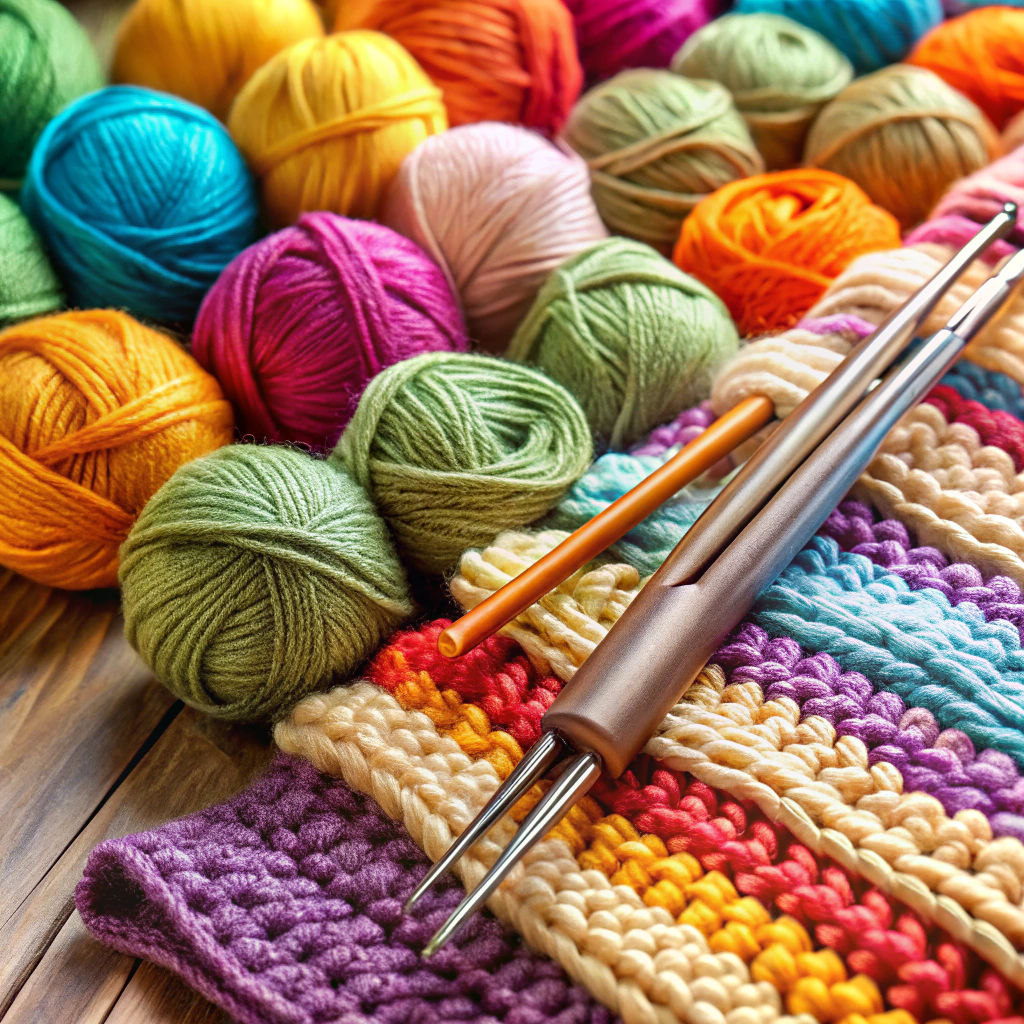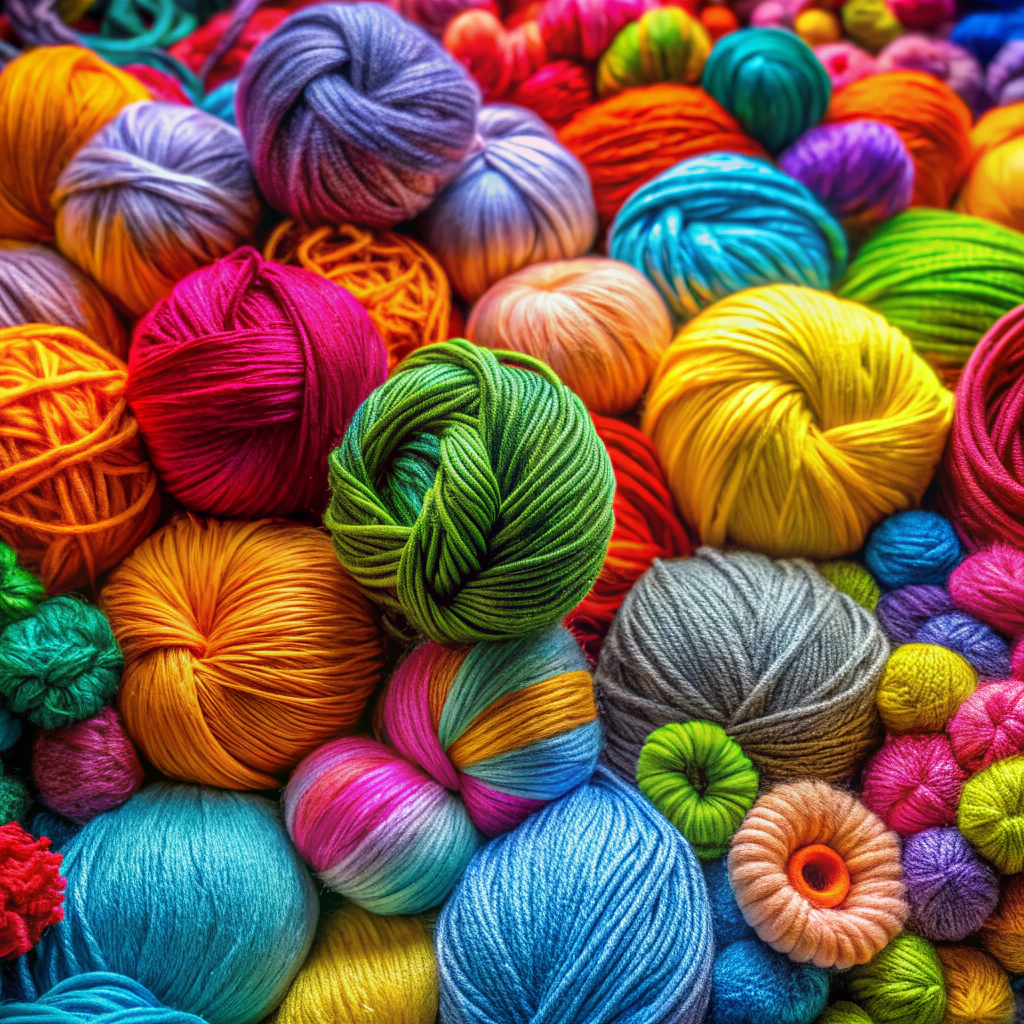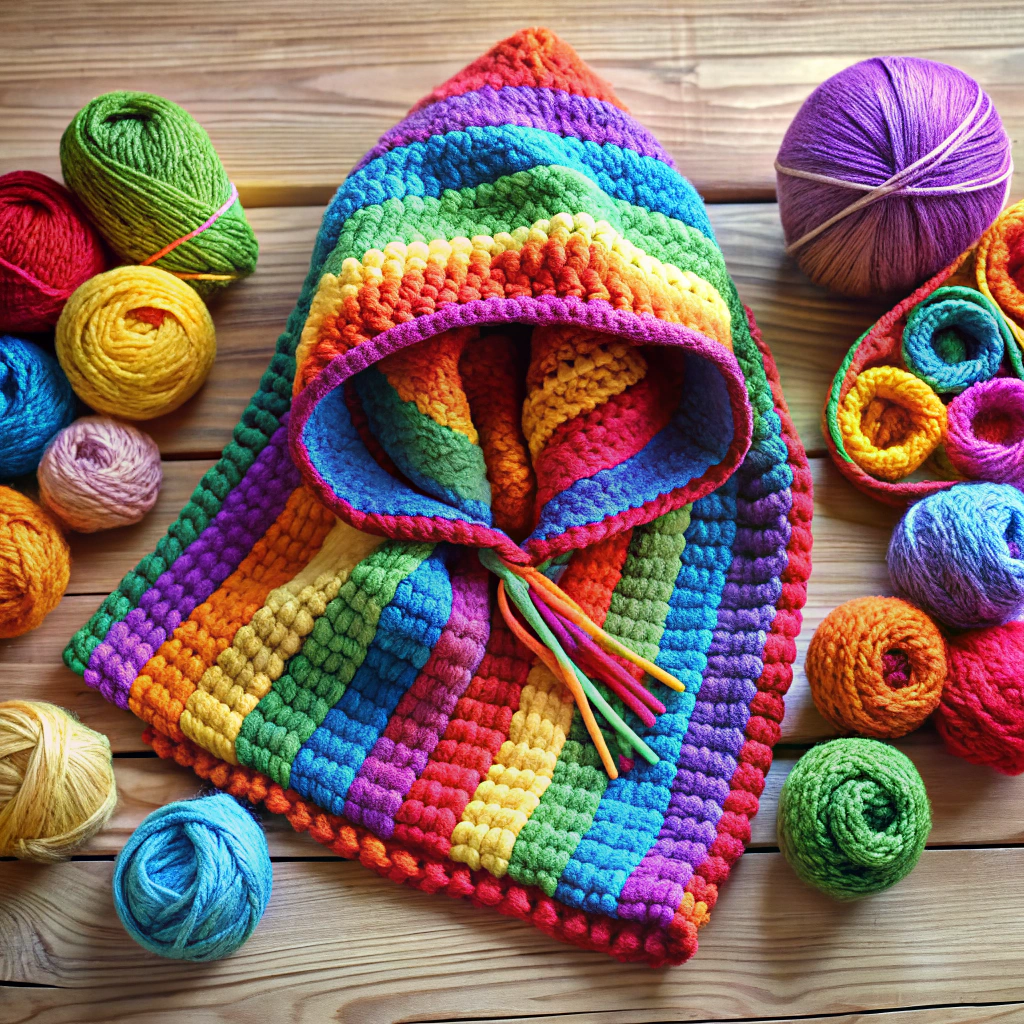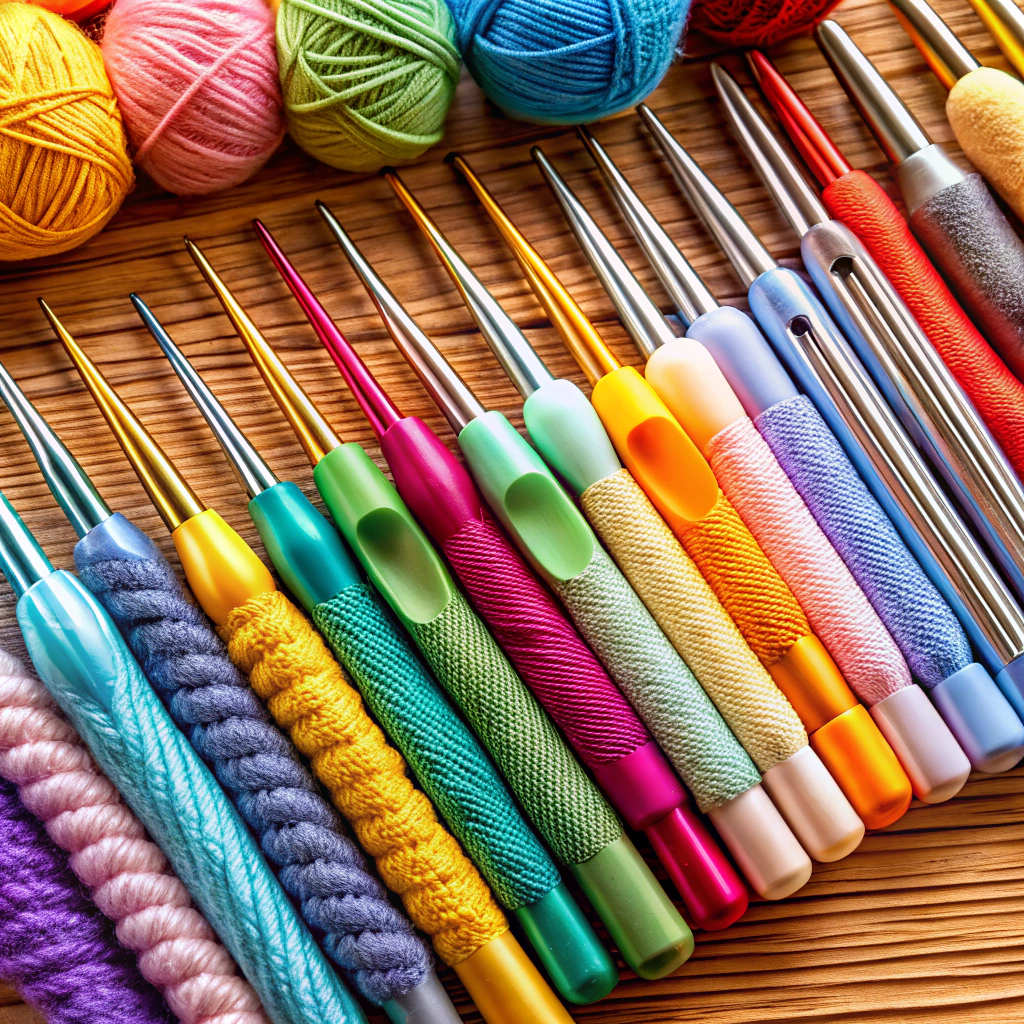This article will teach you how to choose the right crochet hook size for your project.
Ever felt lost in a sea of crochet hooks, yarn weights, and mysterious pattern advice? Fear not, intrepid crocheter! This guide will unravel the mystery of selecting the perfect crochet hook size with the precision of a stitch marker. From yarn bands and fiber types to gauge swatches and personal tension quirks, we’ve got you covered. Dive into this crafting adventure where every question finds its answer, and where your hooks and yarn get along swimmingly.
Key takeaways:
- Look at the recommended hook size on the yarn band.
- Consider the yarn weight and fiber content for choosing a hook size.
- Check the pattern’s materials section for suggested hook size.
- Make a gauge swatch to ensure correct tension and stitch size.
- Adjust hook size based on your unique crochet style and tension.
The Yarn Band
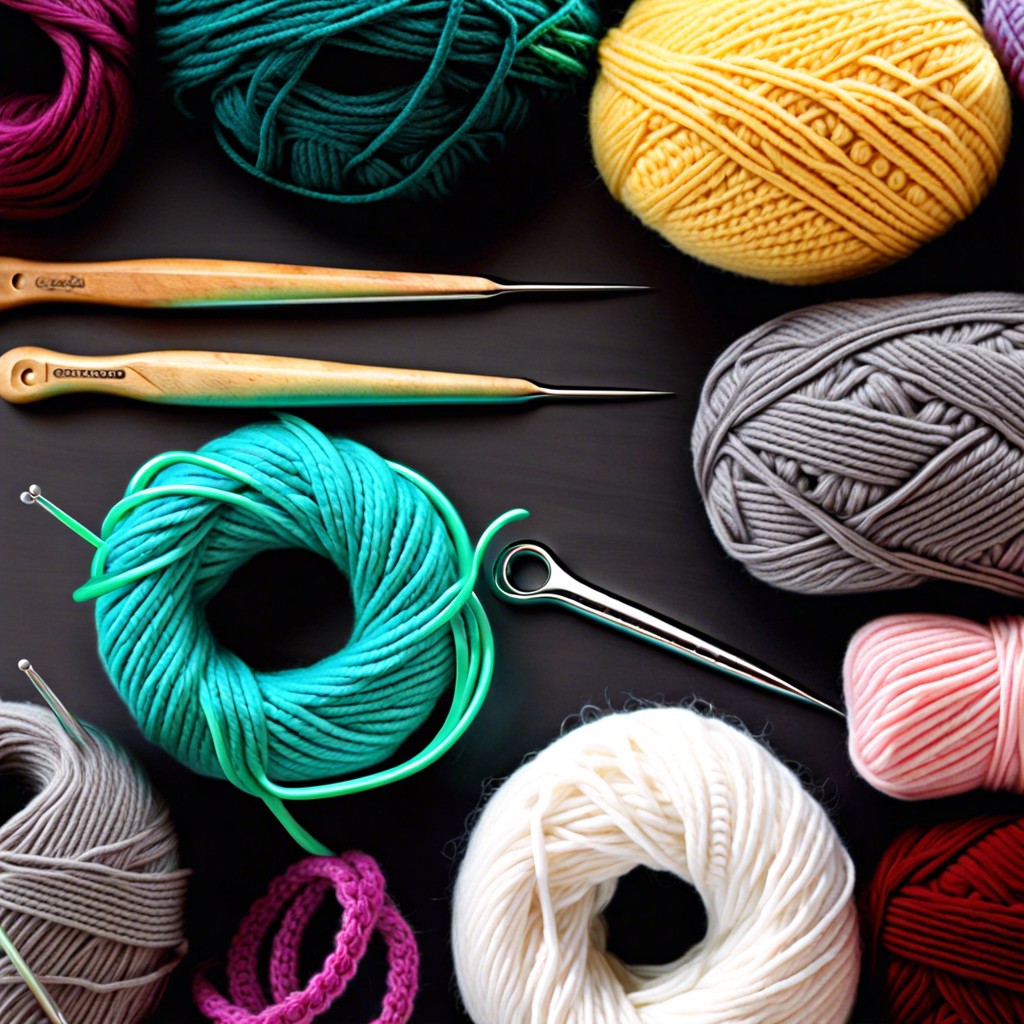
Look at that handy-dandy yarn band, your new best friend in the yarn world! It’s like a treasure map guiding you to crochet bliss. Here’s what to look for:
- Recommended Hook Size: Usually printed right there, this is a great starting point. Trust the band; it’s not just a pretty face.
- Yarn Weight: From lace to super bulky, the weight category hints about the hook size. Fine yarn, finer hook. Thicker yarn, chunkier hook.
- Gauge Information: Sometimes, the band shows gauge info. It tells you stitch counts using a certain hook, giving you a solid clue.
- Fiber Content: Acrylic, wool, cotton—they all behave differently. The band might suggest a hook size optimal for the fiber type.
This little piece of paper wrapped around your yarn skein is more powerful than it looks. Read it, trust it, and crochet on!
The Crochet Pattern
Patterns are lifesavers. Seriously, they do most of the thinking for you. Here’s what you need to know:
First, check the pattern’s materials section. It usually suggests the hook size. There’s no need for a guessing game!
Second, there might be a gauge. The gauge tells you how many stitches and rows should fit into a specific measurement. This helps ensure your finished piece looks just like the project in the picture. If your stitches are too tight or too loose, you might need a different hook size.
Patterns are like treasure maps. Follow them correctly and you’ll unearth crochet gold.
The Gauge Swatch
Grab some yarn and your chosen hook, and make a small sample square. This is your crochet guinea pig. Here’s why:
First, it helps ensure your stitches match the pattern’s requirements. You don’t want a beanie that fits your cat instead of your head.
Second, it reveals if your tension matches the designer’s. Too loose? Your project might look like a hammock. Too tight? It might be bulletproof.
Lastly, it saves time! A quick swatch now can save hours of frogging (that’s ripping out stitches, for the uninitiated).
Test, tweak, and triumph!
Your Crochet Style
Some folks crochet like they’re on a roller coaster, fast and full of wild tension. Others seem to be on a lazy river, with loose loops and relaxed fingers. Here are a few tips to understand how your unique crochet vibe affects hook size.
If your stitches look like they’re in a corset, tight and tiny, try a larger hook. It’s like giving them room to breathe.
Got loosey-goosey stitches that look like they’ve had a few too many? Opt for a smaller hook to tighten things up.
Feel like Goldilocks and can’t find the perfect fit? It’s all about trial and error. We’re all different, and that’s what makes crochet an art, not a science. So grab a hook and play!
What Happens If My Hook Is Too Big?
Your creation may end up looking like it borrowed some space from your neighbor’s garden. Loose, saggy, maybe even drapey, but not in the stylish way. The stitches will be larger, and you might see more gaps between them, making your piece more open and airy than intended.
Your blanket could turn into a fishnet if the hook’s too large. Seriously, no one wants chilly toes.
It can also mean your project will grow bigger in size. That baby bootie? Now it’s a baby boat. Lots of extra yarn going into it too. Cha-ching for the yarn store, wallet weeps.
Finally, your stitch definition could suffer. Instead of crisp, neat stitches, you may end up with something resembling yarny blobs. Cute, but not really what you’re aiming for.
